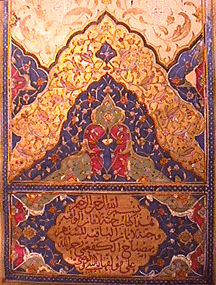Needs must I tear them out," the peacock cried,"
These gorgeous plumes which only tempt my pride?
"Of all his talents let the fool beware:
Mad for the bait, he never sees the snare.
Harness to fear of God thy strength and skill,
Else there's no bane so deadly as free-will.
-Rumi
The most moving thing for me in Grey's The Mission of Art is his absolute insistence that artists have a responsibility to the Light. The art we create has impact and artists must choose whether to add to the darkness in the world or to increase it's luminosity. Grey believes that an artist cannot produce works of light if they do not choose the light in their own lives and I agree. No one is perfect, but the intention to do right and be a source of good in the world counts even if we don't always succeed.Speaking to the artist Grey says:
It is your responsibility to find the ways your visions can positively influence individuals and your culture...The mere process of fixing imagery onto surfaces or forms does not ensure spiritual development. It is the intention and awareness from which artists create that determine whether their work will serve mammon, ego or spirit. (p. 218)
I love that. It is our responsibility. In our culture we have lost sight of our greater responsibilities to humanity and the Earth in favor of consumerism and greed. This reminds me of the many mystical visions recorded throughout time where the Divine gives the mystic a task to be done in the world, for example Hildegarde of Bingen. These visions have personal meaning for the mystic, but they also offer a greater message for humanity. The experience of the Divine, must not be controlled or secreted away. It is our charge to be a doorway for the Light, our source, to enter into his wold.Truly, we have no other reason than to serve the Light because this Light is really our Self anyway. Every moment we fight this reality we waste our life force and we call upon darkness. How much easier it is to surrender to our true calling, to pluck the peacock feather as Rumi says, and serve. Artists are blessed with a unique opportunity because art can reach the spirit without engaging the mind and our egos. Art can effect deep and meaningful spiritual evolution in the world.

 So I started & finished
So I started & finished 
